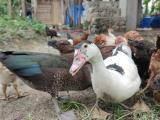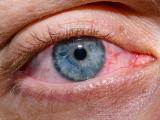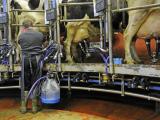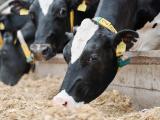Apr 26, 2013 (CIDRAP News) – Taking a cue from curious findings noted during the 2009 influenza pandemic, Canadian researchers are suggesting that past exposure to distantly related viruses may help explain why the age curve in H7N9 cases is so skewed to the older side.
Danuta M. Skowronski, MD, of the British Columbia Centre for Disease Control and three colleagues offer the hypothesis that older Chinese men have greater lifetime exposure to H7 avian flu viruses than younger people and therefore may have weakly cross-reactive antibodies that paradoxically promote infection with the novel H7N9 virus. They offer the suggestion in this week's Eurosruveillance.
"At this stage, we should . . . stay open to the possibility that pre-existing cross-reactive antibodies may actually facilitate the viral infection process," they write.
The unusual age and sex distribution of H7N9 cases has puzzled experts. Skowronski and colleagues note that two thirds of the 109 case-patients reported as of Apr 23 were at least 50 years old, and an equal fraction of them were male.
World Health Organization officials pointed out this week that this pattern contrasts with the general Chinese population, which includes a large share of young and middle-aged adults and a preponderance of women in the older age brackets. Others have noted that the H7N9 age distribution is very different from that of H5N1 case-patients in China, most of whom have been young.
Some have suggested that older Chinese men may have more exposure to poultry or birds than other groups, but no answers have emerged so far.
The phenomenon of cross-reacting antibodies that facilitate infection is best known in dengue infections, according to Skowronski and colleagues. The dengue virus comes in four types, and a person who has a second dengue infection involving a different type from the first one can suffer a severe illness.
The phenomenon is called antibody-dependent enhancement (ADE), the Canadian experts write. "ADE is thought to occur when low levels of weakly heterotypic, cross-reactive but not cross-protective, antibodies generated by past exposure to virus antigen, eg, through prior infection or immunisation, form bridging complexes to facilitate uptake and replication of related but non-identical variants," they state.
Flu experts have long been interested in the possibility of ADE in influenza, and some Canadian findings during the 2009 H1N1 pandemic may offer indirect evidence of it, the article goes on to say.
Early in that event, the Canadian researchers found that people who had previously received a seasonal flu vaccine that contained a virus distantly related to the pandemic strain had about a doubling of risk for medically attended pandemic H1N1 illness.
In a follow-up experiment, the researchers found that vaccinated ferrets had higher lung virus titers and more severe illness after exposure to the pandemic H1N1 virus than ferrets with no previous exposure to flu or flu vaccine, according to the article.
The authors say there's little information to suggest whether older Chinese men have had greater lifetime exposure to H7 avian flu viruses than other groups. Few serologic surveys to assess H7 antibodies in the Chinese population are available in English, and the ones available lacked statistical power to compare different groups by age and sex.
The researchers conclude by suggesting that serologic surveys to compare cross-reacting antibodies and neutralizing effects by age-group could be important for assessing protection and risk.
See also:
Apr 25 Eurosurveillance article by Skowronski and colleagues
Apr 22 CIDRAP News story "WHO ponders preponderance of older men with H7N9"
Apr 19 CIDRAP News story "Why does H7N9 age profile tilt older?"

















